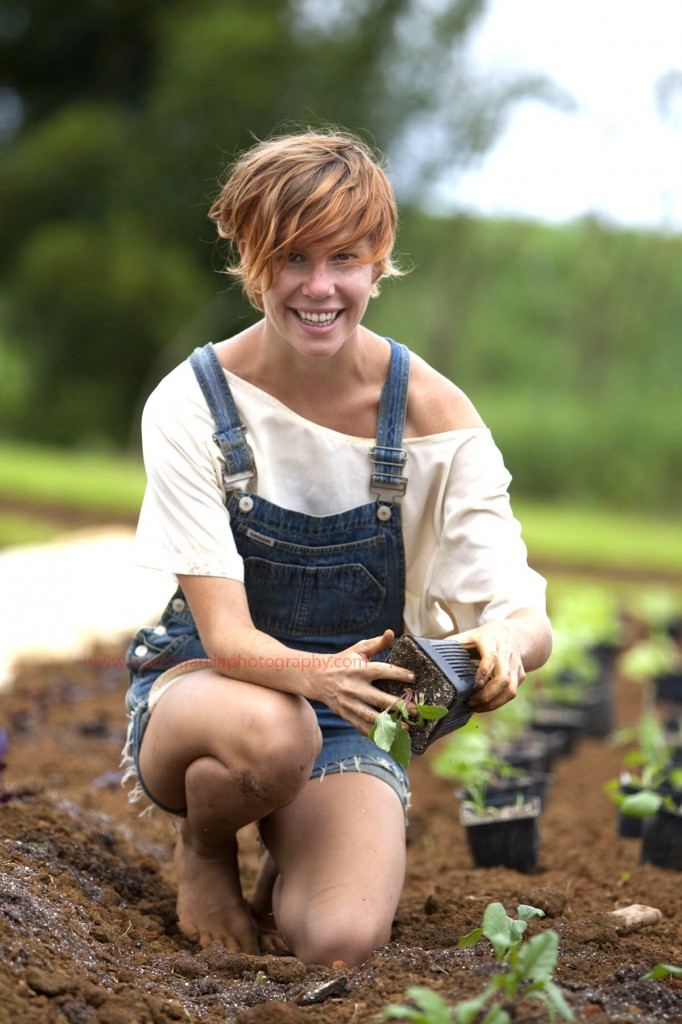
Just a quick posting of tearsheets from a travel piece I shot for the LA Times and the new travel trend of Agrotourism in Hawaii. Well traveled tourists are now recognizing the value of eating off the resort and eating and shopping locally. Fresh fruits, vegetables, and produce can be pretty good albeit rather pricey at times. But on an island, everything can be pricey.
So some have asked how much certain things cost here so here is a quick rundown:
gallon of milk: around $6 for mainland, $8 to $9 for locally produced.
gallon of gas: HNL: $4.45, outer island $4.70+
lb of bananas: local apple bananas are about $1.30, imported are around $1.09
pineapple: Costco price is $3.29 or so, tourist price at fruit stand, $6
lb of ground beef: $3-4
locally grown tomatoes: $5/lb, imported are about $2.99/lb
But some of these costs didn’t surprise me from New York but they are shocking when you go to a place like San Antonio where you pay like $1 for 10 limes/lemons where at Safeway locally you get a lemon for like $1.29 EACH.
But to get back to the shopping locally at local farmer’s markets, things are obviously fresher and more unique and you will get a taste of the small farm as opposed to the corporations growing produce on the west coast. You can’t buy mangosteens or rambutans at Safeway but you’ll pay for it at the farmer’s markets but the tastes and joy of eating something exotic really do make you feel like you are in the middle of the Pacific.
Lots of the exotic fruits and produce grown here are not native but they do add flavor to the local cuisine. Its great tourists are now recognizing the value of having a sustainable trip where things are sourced locally rather than imported at high costs. This creates local jobs, demonstrates we shouldn’t convert every inch of ag land into condos and resorts, and sustains a better way of life for everyone one on the Islands. The drawbacks…well the major one is the costs of doing business, and the costs of labor. Hawaii has no access to cheap immigrant labor to work in the fields, labor laws are strict and surely add to the costs of doing business, and Hawaii is clearly not business friendly. Costs and taxes are high enough to drive small and start ups off the Islands. Historically, the plantations took advantage of the labor here which drove a rise in unionism and now housekeepers at the big hotels are paid as much as the night managers. How the hotels survive is by passing that cost onto you.
Regardless of my ranting, locally grown whatevahs is the trend across the country. I’m glad we’re pushing more of this into our lifestyle even if it does costs a little more. A locally grown avocado is pretty tasty. Locally grown greens are crisper and its always neat to know I got an egg from a local chicken and not off a boat.
Oh, the above picture of the farm girl, Norah Hoover. Ah, what a beauty. She was working on the Kauai farm that produces stuff for Common Grounds in Kilauea. As the staff was walking me around showing me parts of the farm and gardens which produce a good portion of the food for their restaurant, Norah walks over, barefoot no less, to plant kale into the field. I immediately was drawn to her as her off the shoulder shirt, overalls, and bed head red hair fit my image of what organic farming and life is like on Kauai. Sure enough, the LA Times and others have used that picture to be the lead for the story. She made a great picture.


